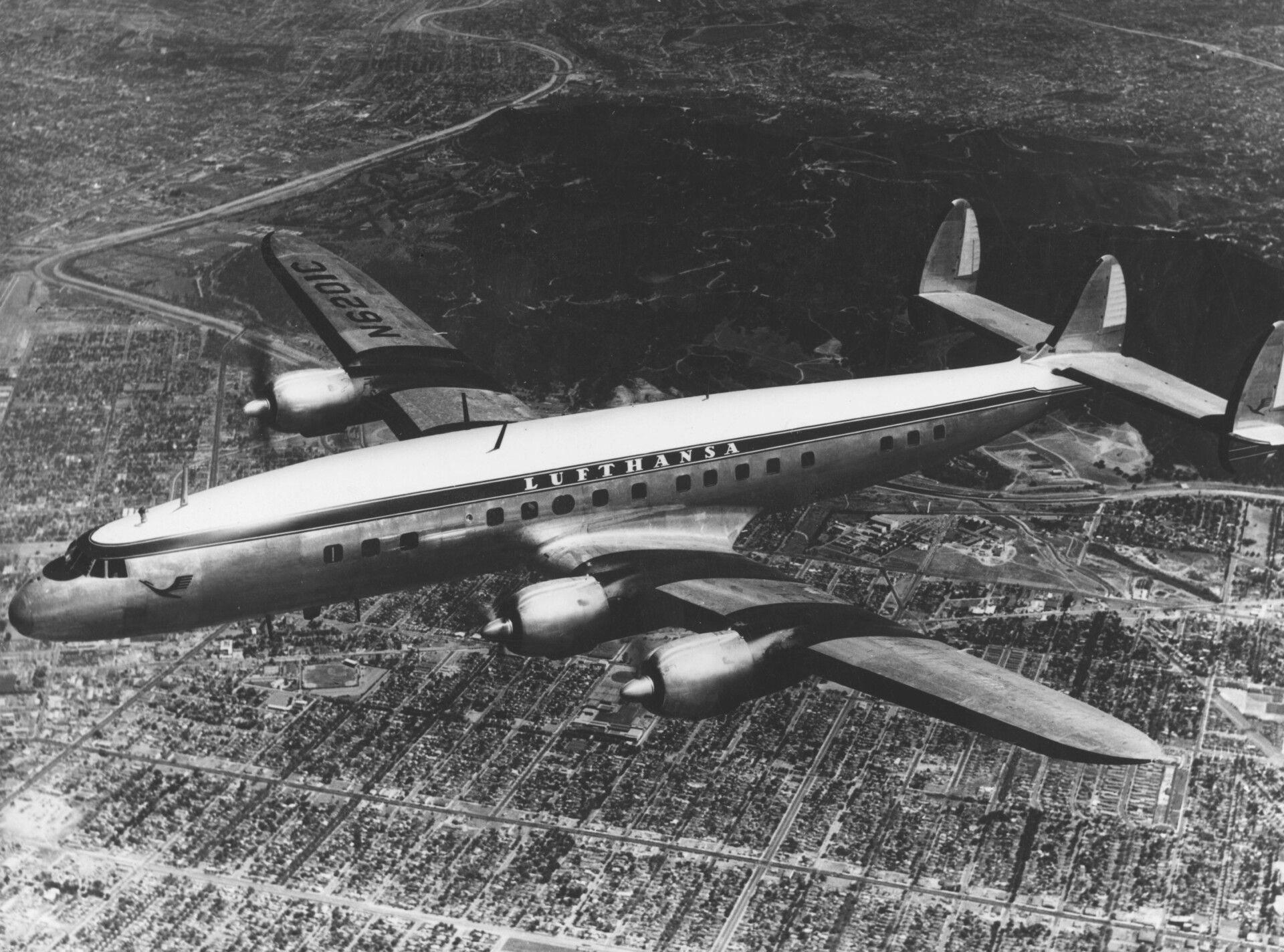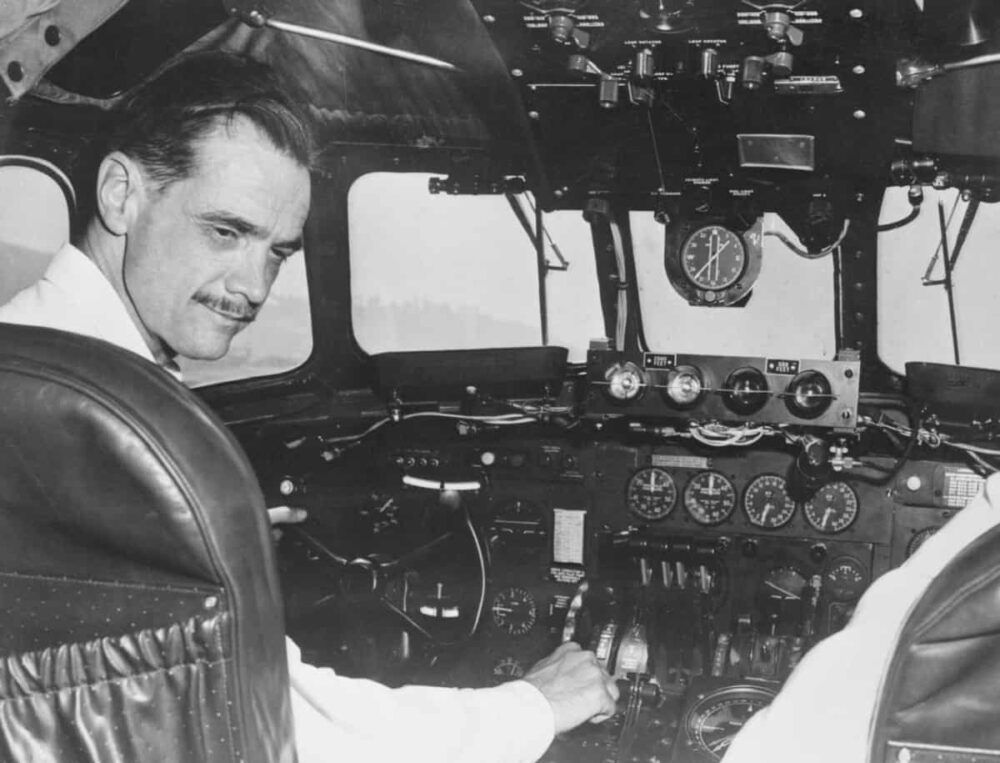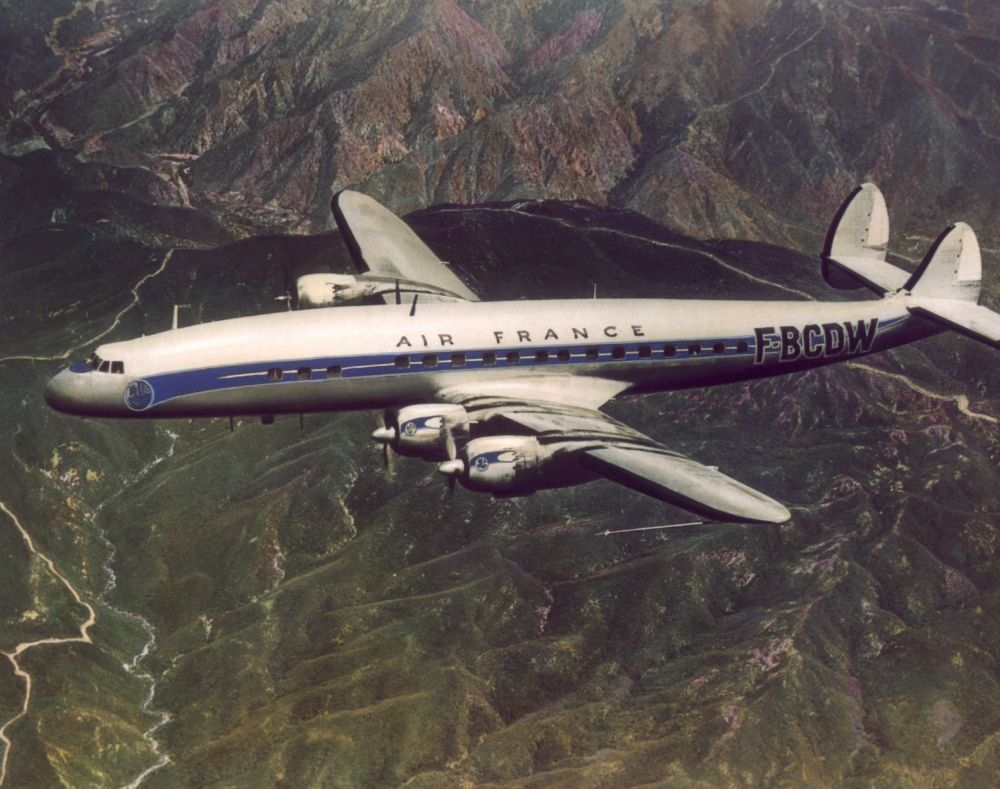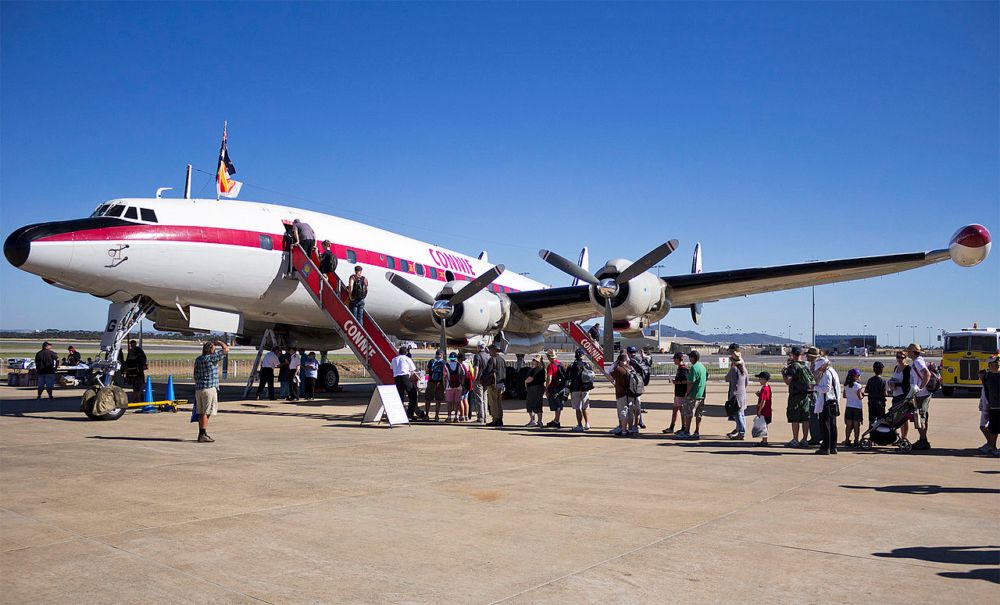The Lockheed L-1049 Super Constellation was a considerably influential aircraft following its introduction in December 1951. The plane had a range of 4,480 NM (5,150 mi), and it was at least twice as fuel-efficient as the preliminary jets that were around during the time. With 70 years passing since the type’s first flight, are there any units still flying?
Pioneering spirit
The legendary Howard Hughes had inspired the Constellation series. The aviator was keen to increase his presence in the industry and met with important Lockheed Corporation personnel, including Chief engineer Hall Hibbard, chief research engineer Kelly Johnson, and president Robert Gross. The trio listened to Hughes' desires, and the Constellation program was born.
The project was a success. The USAAF and TWA were two operators that debuted family in the 1940s, ensuring it covered good ground across commercial and military services.
Lockheed eventually reacquired the XC-69 Constellation prototype model from the Hughes Tool Company. The company stretched it by 18 ft (5.5 m) to create the basis for the L-1049 Super Constellation. TWA was once again another primary user of this type. Eastern, Air France, KLM, TCA, Qantas, PIA, and Avianca were some additional key operators.
End of an era
In total, 259 commercial and 320 military units were produced between 1951 and 1958. While the military variants were the ones to be produced the most, they were no longer seen in operation after 1983. This was when India retired its units.
The L-1049 Super Constellation last flew commercially in the United States in February 1968, with Eastern putting the plane to rest in the country. It wouldn't be until 1993 for the final commercial L-1049 to be conducted. This was when the FAA banned all airlines from the Dominican Republic. Those operating in this nation were the last to commercially fly the family.
Still around?
Despite the military and commercial retirements, until recently, two Super Connies were making appearances in the airshow scene. One unit was with Breitling, the luxury Swiss watch manufacturer. The company had a partnership with the Super Constellation Flyers to fly the C-121C Super Constellation HB-RSC. However, this unit has since been retired.
The other unit still airworthy is associated with the Historical Aircraft Restoration Society (HARS) in Australia. VH-EAG is a C-121 Constellation, which like Breitling’s unit, is a militarized version of the Super Constellation.
Stay informed: Sign up for our daily and weekly aviation news digests.
Keeping the legacy going
HARS conducted extensive work to restore the former USAAF unit in the 1990s. Notably, the plane took off for the first time in nearly 18 years in 1994 before performing an ambitious flight across the Pacific to Sydney from the US in February 1996. The aircraft stopped at Oakland, Honolulu, Pago Pago, and Nadi on the way, totaling a flight time of 39.5 hours.
“Connie is now the only flying L-1049 Super Constellation in the world. Until recently, the other was the Breitling Super Constellation in Switzerland. Amazingly both aircraft were built next to each other in the factory. Connie is #4176 and Breitling Constellation is #4177. An L-1649A Super Star (the last model of the Constellation line) is currently in the USA being restored to flight by the Lufthansa Museum,” HARS shares on its website.
“An L-749 Constellation was flown from Arizona to Virginia in early 2016 to be fully restored by Dynamic Aviation. This VC-121A-LO was the original Air Force One used by President Dwight D Eisenhower. She was known as Columbine II.”
Altogether, there were several technological advancements with the Super Constellation. While passengers during the plane’s heyday would have enjoyed components such as air conditioning, reclining seats, and additional lavatories, the most significant features were regarding its power. Lockheed Martin highlights that the type can hold up against some modern aircraft despite being introduced seven decades ago. After all this time, it’s fantastic to know that the legend is still taking off.
What are your thoughts about the Lockheed L-1049 Super Constellation? What do you make of the history of this aircraft? Let us know what you think of the plane and its operations in the comment section.




